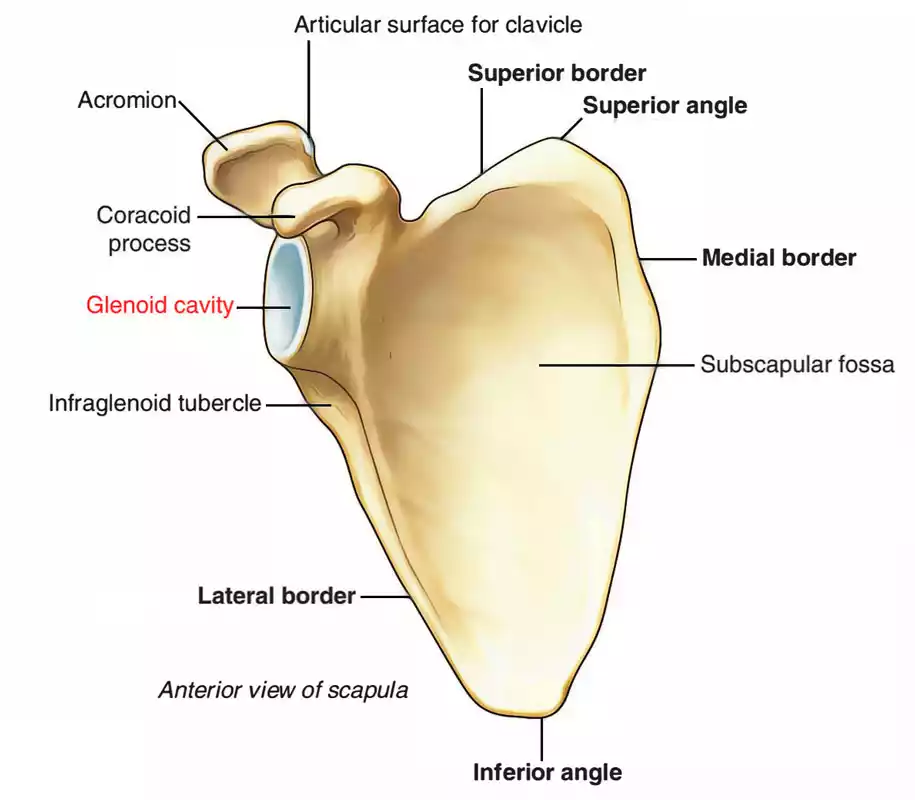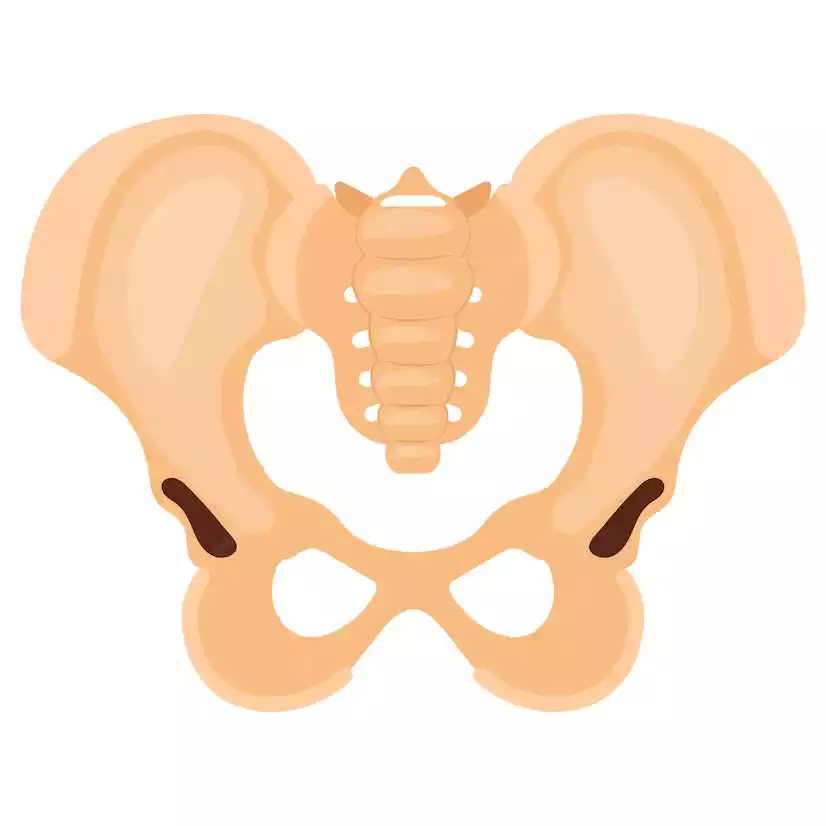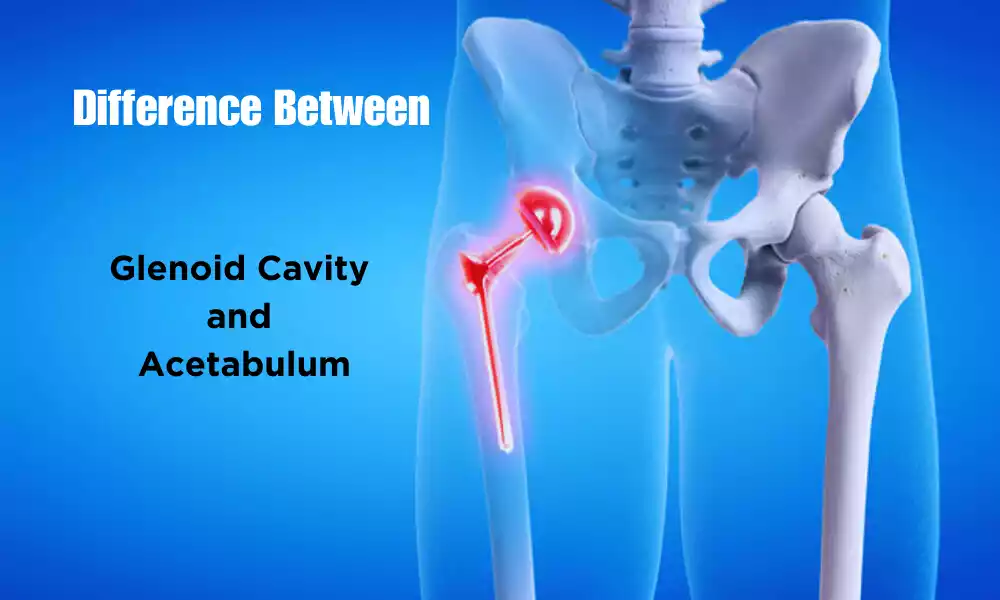Glenoid Cavity and Acetabulum are essential anatomical structures that play crucial roles in the functioning of the human body’s joints. These structures are integral components of synovial joints, facilitating movement and providing stability. The glenoid cavity is found within the shoulder joint and enables a wide range of motion in the upper limb.
On the other hand, the acetabulum is situated in the hip joint, supporting the body’s weight and allowing controlled movement of the lower limb. Understanding the unique characteristics and functions of these joint components is key to appreciating their significance in maintaining mobility and stability.
What is Glenoid Cavity?

The glenoid cavity, also known as the glenoid fossa or glenoid socket, is a shallow, concave articular surface found on the scapula (shoulder blade). It is an essential component of the shoulder joint, medically referred to as the glenohumeral joint. The glenoid cavity’s shape and structure allow it to articulate with the head of the humerus (upper arm bone), forming a ball-and-socket joint.
The shallow nature of the glenoid cavity grants the shoulder joint a remarkable range of motion. This increased mobility comes at the cost of stability, as the glenoid cavity’s shallow configuration provides less inherent support to prevent dislocations. To counteract this instability, the glenoid labrum—a ring of fibrous cartilage—encircles the glenoid cavity’s rim, adding depth and stability to the joint. The glenoid labrum also aids in securing the head of the humerus within the socket during various arm movements.
Due to its unique characteristics, the glenoid cavity allows the shoulder joint to perform a wide range of motions, including flexion, extension, abduction, adduction, rotation, and circumduction. This versatility makes the glenohumeral joint well-suited for activities requiring precise arm movements and positioning.
What is Acetabulum?

The acetabulum is a vital anatomical feature located in the pelvis, specifically in the hip bone. It is a cup-shaped depression that forms the socket portion of the hip joint, which is known as the hip acetabulofemoral joint. This joint connects the thigh bone (femur) to the pelvis and facilitates various movements of the lower limb.
The acetabulum’s structure is designed to provide both stability and support for the hip joint, which bears a significant portion of the body’s weight during standing, walking, and other weight-bearing activities. Unlike the glenoid cavity in the shoulder joint, the acetabulum is relatively deep and well-suited for weight-bearing due to the substantial loads it must withstand.
The hip joint’s unique construction, with the rounded head of the femur fitting snugly into the acetabulum, grants the joint remarkable stability. This design minimizes the risk of dislocation while allowing controlled and precise movement of the leg. The acetabular labrum, a ring of fibrocartilage, surrounds the rim of the acetabulum, contributing to joint stability by deepening the socket and providing a seal for the femoral head.
The acetabulum plays a crucial role in enabling upright posture, locomotion, and various lower limb movements by providing a stable and adaptable joint for the hip.
Comparison table of Glenoid Cavity and Acetabulum
Here’s a comparison table highlighting the key differences between the Glenoid Cavity and Acetabulum:
| Aspect | Glenoid Cavity (Shoulder Joint) | Acetabulum (Hip Joint) |
|---|---|---|
| Location | Scapula | Pelvis |
| Joint Association | Glenohumeral (Shoulder) Joint | Hip (Acetabulofemoral) Joint |
| Shape | Shallow, pear-shaped | Deep, cup-shaped |
| Articular Surface | Smaller | Larger |
| Orientation | Faces laterally | Faces laterally, superiorly, and anteriorly |
| Range of Motion | Greater range due to shallow socket | Limited range due to deep socket |
| Stability | Decreased stability due to shallow socket | Increased stability due to deep socket |
| Load-Bearing Capacity | Less weight-bearing, more mobility | More weight-bearing, stability |
| Labrum | Glenoid labrum adds depth and stability | Acetabular labrum deepens socket and enhances stability |
| Common Injuries | Dislocations, labral tears | Fractures, labral injuries |
| Surgical Procedures | Arthroscopic labral repair | Joint replacement surgeries |
| Functional Role | Primarily for mobility and precise arm movements | Weight-bearing and controlled leg movements |
| Key Movements | Flexion, extension, abduction, adduction, rotation, circumduction | Flexion, extension, abduction, adduction, rotation |
| Weight-Bearing Activities | Not the primary function | Integral for weight-bearing activities |
This table provides a concise overview of the main differences between the glenoid cavity and acetabulum. Each structure’s unique characteristics contribute to its distinct role in its respective joint and the body’s biomechanics.
Similarities of Glenoid Cavity and Acetabulum
Here are some similarities between the Glenoid Cavity and Acetabulum:
- Articular Surfaces: Both the glenoid cavity and acetabulum are articular surfaces that form part of a synovial joint. They interact with the corresponding articular surfaces of another bone (humerus in the case of the glenoid cavity, and femur in the case of the acetabulum) to create functional joints.
- Labral Structures: Both joints have labral structures that enhance stability and help maintain the integrity of the joint. The glenoid labrum surrounds the glenoid cavity’s rim in the shoulder joint, while the acetabular labrum encircles the acetabulum’s rim in the hip joint.
- Supporting Ligaments: Ligaments play a crucial role in stabilizing both joints. In the glenohumeral joint, the ligaments like the glenohumeral ligaments and coracohumeral ligament support the joint’s stability. In the hip joint, the ligaments like the iliofemoral, pubofemoral, and ischiofemoral ligaments contribute to stability.
- Joint Movement: While the range and type of movement may differ, both the glenoid cavity and acetabulum are integral in facilitating movement. The glenoid cavity allows for a wide range of motion in the shoulder joint, while the acetabulum allows controlled movement of the lower limb in the hip joint.
- Synovial Joints: Both joints are categorized as synovial joints, which means they have a synovial membrane that produces synovial fluid. This fluid lubricates the joint, reduces friction, and nourishes the joint structures.
- Stability and Mobility Balance: Both joints strike a balance between stability and mobility. The glenoid cavity’s shallow design provides greater mobility but less inherent stability, while the acetabulum’s deep structure offers more stability but limited mobility.
- Weight-Bearing: While the primary role differs, both joints bear a degree of weight. The glenoid cavity bears some weight and forces transmitted through the upper limb, and the acetabulum plays a significant role in supporting the body’s weight during standing and movement.
- Articular Cartilage: Both joints feature articular cartilage covering their articulating surfaces. This cartilage provides a smooth surface for joint movement, reduces friction, and absorbs shocks.
While the glenoid cavity and acetabulum differ in their specific functions and anatomical characteristics, these similarities highlight the underlying principles of joint anatomy and function that apply to various joints in the body.
Finial Opinion
The Glenoid Cavity and Acetabulum are distinct yet fascinating anatomical structures that play pivotal roles in the human body’s mobility and stability. While the glenoid cavity enables a remarkable range of motion in the shoulder joint, the acetabulum supports weight-bearing and controlled movement in the hip joint.
Their unique shapes, orientations, and functions showcase the intricate balance between mobility and stability that characterizes various joints in our body. Understanding the differences and similarities between these structures deepens our appreciation for the intricacies of human anatomy and the remarkable ways our joints facilitate movement and contribute to our well-being.



